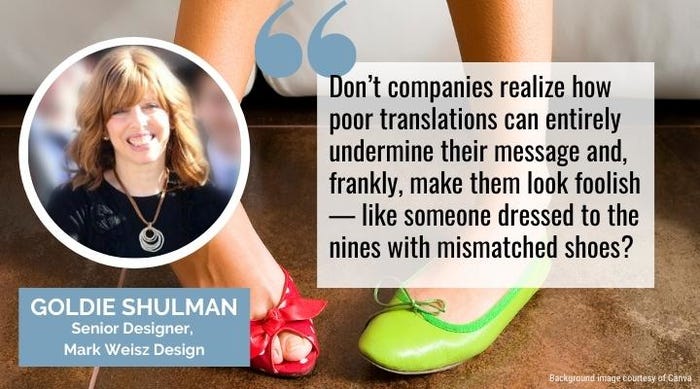Badly written packaging instructions or sell-copy can be wildly funny, as these examples show, until you consider how it effects brand image and product sales.

“The right way to wear the folding ear-loop mask,” read the bold headline. It was followed by this: “Wrong way to wear, bad effect it comes! Wear the mask rightly, reduce the gap actively.” And beneath these sage words of advice were three diagrams, plus three additional specific instructions in equally questionable English. (Step one is too zany to keep to myself: “Open the mask to keep the skin dry. White muscles facing the face & the bridge of the nose above.” Can anyone decipher this ?!)
My question is: Why in this age of burgeoning global commerce is it so common to find English copy — instructions and descriptions — on product packaging from overseas, that is so bad that it can inspire a humor article? My other question is: Who needs three diagrams and three instructions to don a simple face mask?
These are countries printing sophisticated electronic circuits to spec … to run your dishwasher, your phone, and, scary thought, your car. But they can’t find anyone to write English sell-copy that resembles English?
I suspect that the culprit is sometimes good old Google Translate, the machine translation service powered by Google and currently “fluent” in 108 languages. This convenient tool can give one a false sense of confidence when preparing translations. But there are subtle nuances and language-specific idioms that are not programmed into Google. Simply put, Google translate doesn’t always get it right.
This is why, at my office, we’ve learned to either work with professional translators or, at a minimum, to perform a two-way Google translate before trusting Professor Google. We’ll translate to French (for example), and then translate that result back into English. It’s kind of like playing a global game of broken telephone. The results are often way off.
To make matters more comical, I have recently noticed that every brand wants to tell its unique “brand story” to “connect” with the consumer. With extra space on the package, this trend makes good sense, except when the story that you tell is nonsense.
One recent purchase included the following “sell” copy on the box (all lower case): “experience better. life throwing lemons your way? grab your [product name] to experience better. Indulge … for a moment of bliss that whisks you away to your happy place.” Was this written on packaging for a massage chair? A wine cooler? No and no. This was a stapler. Plain and simple.
Clearly, one approach that these companies have adopted to improve the sound of their brand story is to randomly copy-and-paste any phrase that sounds compelling, without considering whether or not the claim makes any sense regarding the product being sold. Skip the expensive vacation and spend a blissful afternoon in your home office. Really?
What that really says about your brand
Granted, shoddy English on a package is sometimes a tip-off that this is an equally shoddy product. You may suggest that these are all cheap, penny-a-piece, throw-away items with no budget for costly copywriters. But that isn’t always the case.
A recent higher-end sweater purchase came in a bag that included the following: “Our style focus on modern, elegant and simple clothings are suitable for daily leisure to participate in the party. Building a comfortable and exquisite women image is the sincere gift to you. We hope that every woman wearing [brand name] can have a mindset across the ages.”
And when I bought a quality lighter for my candles, it came in a beautiful box that exuded elegance and class. This was clearly a company that valued its image and was prepared to pay a premium price to make a good “unboxing” impression on the consumer.
With all that, the classy matte, heavy-weight stock and the magnetized closure, they printed this as part of the instructions: “During ignition, there will be noise of ‘zee, zee,’ which is high-voltage power generation, please use with release. After using, please backward the bonnet in the initial position.” I am not making this stuff up.
Of course, we are all human and not every piece of written copy will be entirely error-free, 100% of the time … but some of these examples are just too outrageous to ignore.

Don’t companies realize how poor translations can entirely undermine their message and, frankly, make them look foolish — like someone dressed to the nines with mismatched shoes? How much would it cost to have someone fluent in English proofread these packages before going to print?
For heaven’s sake, there are now programs designed to catch and improve poor grammar. One of those programs is having a heart-attack as I write this. It keeps flagging and offering to correct the offending grammar in the quotes that I have included here. In other words, it takes extra effort to keep the mistakes in!
I may be one of the few remaining consumers who actually reads the text printed on packages. But I do, and sometimes it is enough to make me want to go off and spend some quality time with my stapler.
About the Author(s)
You May Also Like




